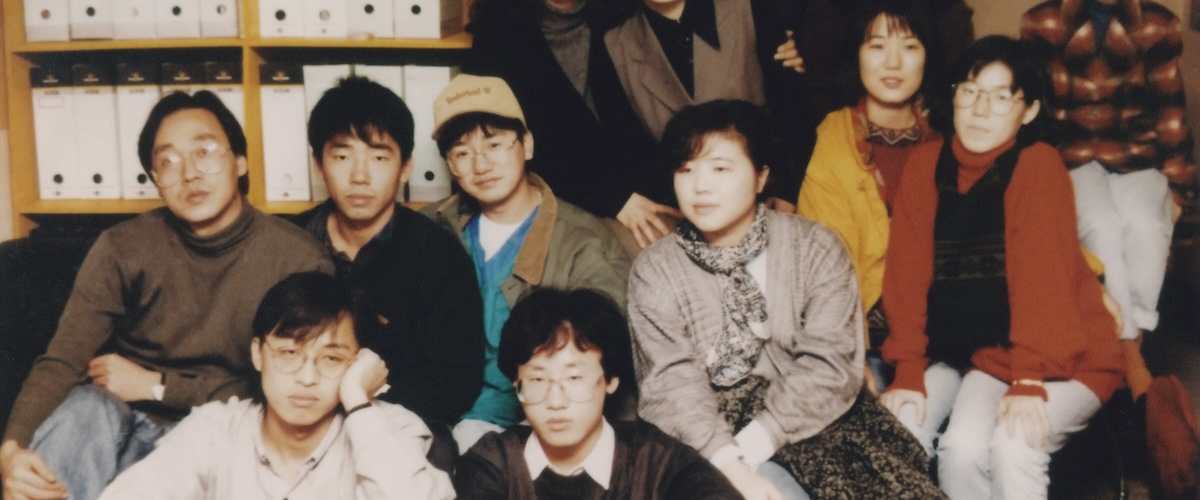Lee Hyuk-rae’s ode to a bygone era in South Korean film culture is a sweet tribute to his generation’s college days in the early ‘90s, a time when you could find friends and passion poring over books and analyzing movies—and the last generation who didn’t always have access to films at their fingertips. Although the time was short-lived, it clearly left a mark on its members, even if some went on to pursue careers outside of film or, in the case of alum Bong Joon-ho, used those formative years to build the foundation for his new career as a film director.
“Yellow Door: ’90s Lo-fi Film Club” does not follow the narrative niceties of a straightforward documentary. There’s no agreed-upon series of events. After 30 years, members of the group called the Yellow Door Film Institute misremember details about films they watched or disagree on the sequence of events in their shared history. The documentary begins with a member’s fond anecdote about Bong’s earliest film, “Looking for Paradise,” a stop-motion animated short that wowed his small cohort at the time but that he kept hidden for decades out of shame over his amateur first attempt at filmmaking. At the end of her summary, Lee, from behind the camera, corrects her: she’s swapped the main character and villain in the movie. The flawed memory sets off a series of playful “Rashomon”-like stories and counter-stories, each member bringing different experiences to share from their perspective.
Bong features heavily in the film (how could he not?), but the voice leading the film is not exclusively his. Film club member Lee also appears alongside about a dozen or so cinephiles who used to meet at a second-floor office that gave the group its name after its yellow door. It became a makeshift archive of bootleg VHS tapes, many labeled by Bong in both the film’s original language and Korean, many film books where they could only imagine the scenes of movies the pages described until someone could make a VHS copy of it from somewhere. Throughout the documentary, there’s a rosy nostalgia for those easier days when they could just sit and discuss films, debate semiotics, and experiment by making their own movies with 16mm film and video tapes.
Over Zoom and across time zones, far-flung members of the Yellow Door Film Institute reconvene to retell their history through teary-eyed smiles and many groans over their youthful mistakes. Through their memories, the audience learns that this was not a singular cinema club but part of a cultural trend as other film groups of movie-hungry students and fans sprung up throughout the city. The grassroots film culture laid the groundwork for South Korea’s first international film festival and the spate of art house cinemas that flourished in the mid-90s. As the underground film scene became mainstream, members of the group grew up and moved on to other lives and jobs. Or, at least, some did while others like Lee and Bong continued their cinematic journeys.
Though the story that Lee reconstructs in “Yellow Door: ’90s Lo-fi Film Club” is fascinating, it’s given a limited visual presentation here, often using talking head-style interviews of the various members of the group. And not all of the on-screen Korean text is translated in the subtitled version I watched, which meant I missed many names or movie titles if I didn’t already recognize them.
But while the film is no more or less someone else’s reunion scrapbook, it’s hard to feel disconnected from the bright, excited faces full of curiosity and potential or endearing stories like when Bong bought his first video camcorder. He cradled it in his arms in the meeting at Yellow Door to protect his first expensive purchase. It’s the stuff college memories are made of.
Now streaming on Netflix.




















